With Ethernet you have variants. Below some basic ones are shown.
no additional hardware, but 300 Mbps system overall performance is unreachable

(n) units of 3-port 100BASE-TX/1000BASE-T unmanaged switches as additional hardware, your target system overall performance of 300 Mbps in reachable now

simple ring topology, (n) units of switches supporting a ring management protocol, e.g. (Rapid) Spanning Tree Protocol, are needed as additional hardware, also this is a single link fail withstandable redundant architecture

simple topology based on link aggregation, up to 200 Mbps of overall system performance is hypothetically reachable

Also, if you are interested in real-time dependable industrial Ethernet technologies, make a look on HSR and after to other ones in its group standardized by the IEC 62439 publications series.
IMO, EtherCAT is out of the today's trend in networking based process automation. There are two main technologies for that now: PROFINET and IEC 61850. The first is with a need of special (over the IEEE 802.1D/802.1Q rules) switching hardware while the second is not.
What about other technologies you mentioned, use USB & FireWire & Thunderbird are compatible with each other and practically the same (as per wiki) therefore without enabling a star topology they are all useless in your case. Because a daisy chain could be considered as a sub-case of a master-driven ring topology, additionally you may search for a non-Ethernet-based networking technology (being still active today) supporting ring (open/closed) topologies, compatible with the MCU you use, maybe you'll find something i'm not familiar with. Good luck.



